Alex and I hadn’t planned on starting our trip here a week ago. I’d originally arranged an 18-hour shuttle drive from Whitehorse to the Tsichu River high in the Mackenzie Mountains, but the washed out Canol Road forced us into this last-minute bush plane drop to an obscure little lake the charter company didn’t know anything about. Scanning the maps, this lake looked like our best shot.
It took a bit of convincing to get them to fly us here, wanting instead to deposit us at a lake that was eight kilometers away from the Tsichu. The prospect of beginning our 1,300-kilometer trip from here to Kugluktuk with a long, bludgeoning bushwhack portage was unpalatable, to say the least. Thankfully, they relented.
The opening gauntlet: Arctic expedition gets off to rocky start
Our pilot, Sauli, a Finnish expat who’d only been flying professionally for about a year, was keen on the adventure. After a two-hour flight over the misty mountains, the sliver of water came into view. At under a kilometer long the lake was barely big enough to land on, but looked clean enough for Sauli to be willing to give it a shot. As we banked in, we spotted the remains of an old cabin crumpled among the low willows, indicating this had been a landing zone in the past.
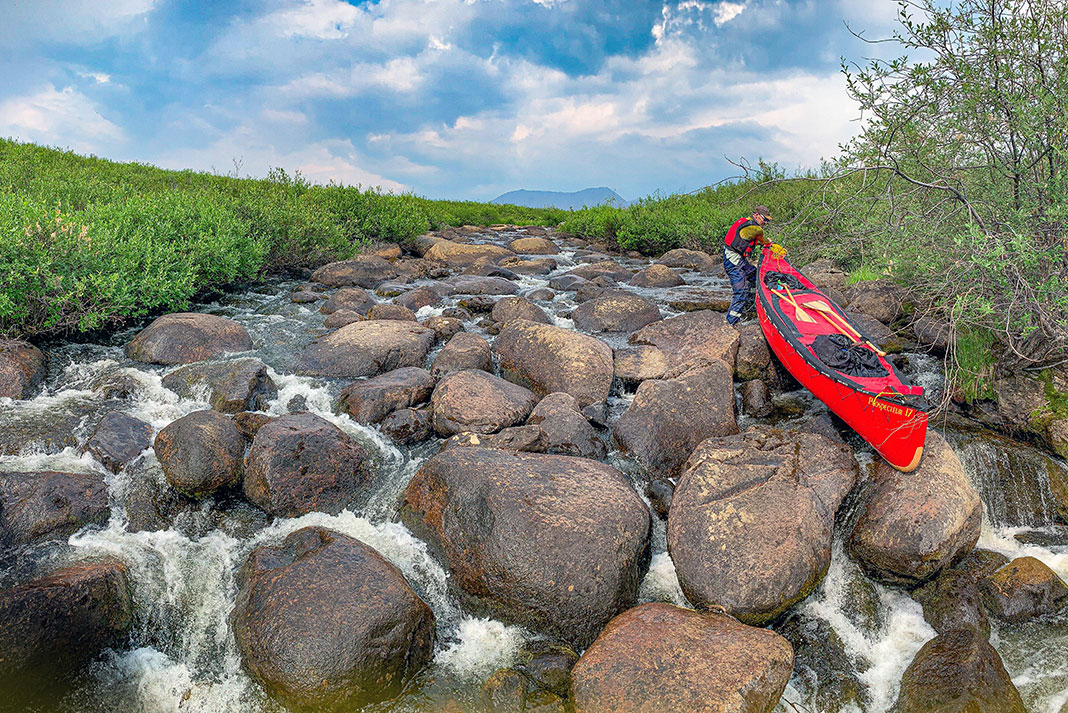
The plane skimmed smoothly on the surface without a hitch, after which Sauli taxied us to the edge of the lake and dropped off our canoe and kit. He scooted back to Whitehorse, leaving us to work our way from the lake down a 1.5-kilometer-long mystery creek that would bring us finally to the Tsichu. For our own reference, we decided to name the lake Little Sauli Lake—though I would later find out it was called Lost Guide Lake—and the exit flume Little Sauli Creek.
We first pushed through the brush to inspect the flattened cabin—a dream of wilderness living now reduced to weathered gray boards scattered over the rusty old springs of a bed frame. “E.H. 1979” was carved into a footstool, hinting at the vintage of the structure and perhaps its builder.
“A remote writing retreat for Ernest Hemingway?” I mused. Perhaps not.
Turning our attention to the creek, we followed it from the lake through the willows for about 50 meters before it turned a corner and dropped away—disappearing completely beneath a matrix of boulders and leaving us high and dry.
Thankfully, our loaded canoe had a T-Formex hull and slid fairly easily over the rocks, aided by gravity and the fresh energy of two people on day one of a canoe expedition. After grinding and grunting our way into a deepening valley over the course of an hour, Little Sauli Creek eventually reappeared over a flat gravel braid melding into its confluence with the Tsichu, where the fresh tracks of a grizzly and her cub wound along the bank. Flowing fast and narrow, a two-day paddle along the Tsichu’s course would bring us to the broad waters of the Keele River.
Glancing back at where we had come from, it looked like there was no creek at all, just a wall of green we somehow descended on a magic carpet of boulders. Our journey had just begun, but we’d overcome the opening gauntlet and were already immersed in a new world.
Finding lines on Little Sauli Creek. | Feature photo: Frank Wolf


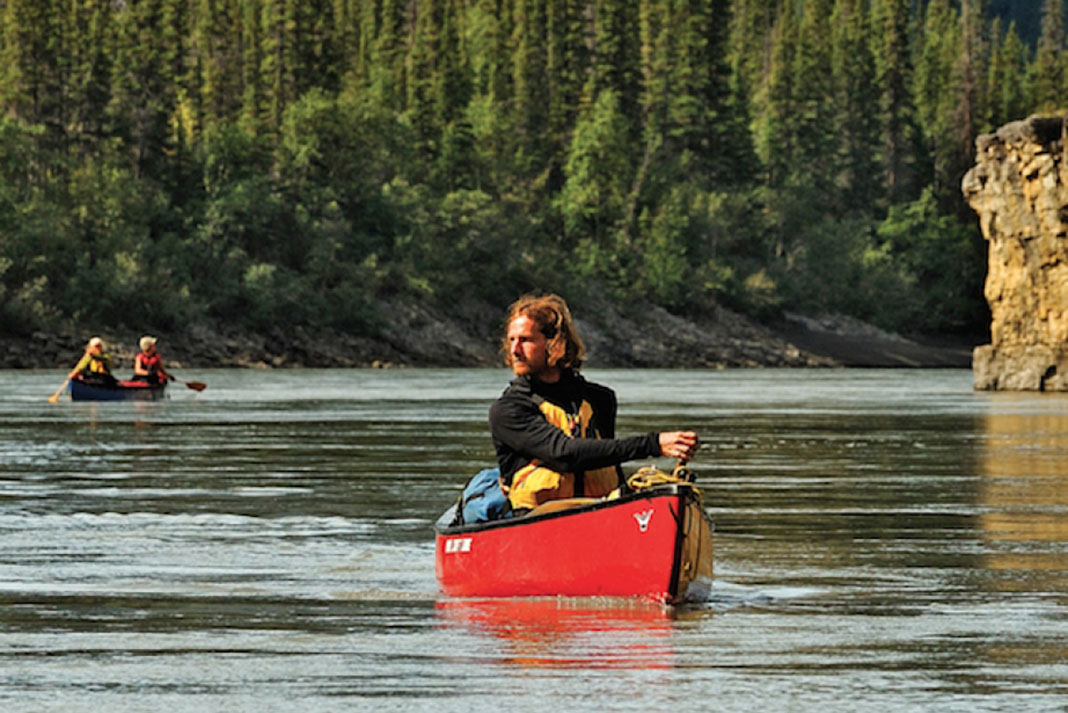

 This article was first published in the 2023 Paddling Trip Guide.
This article was first published in the 2023 Paddling Trip Guide. 
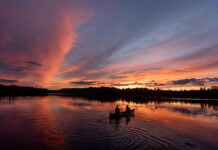

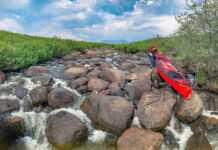
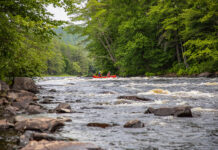

What ambition – and those rocks look rough. Happy paddling! I will look for future reports